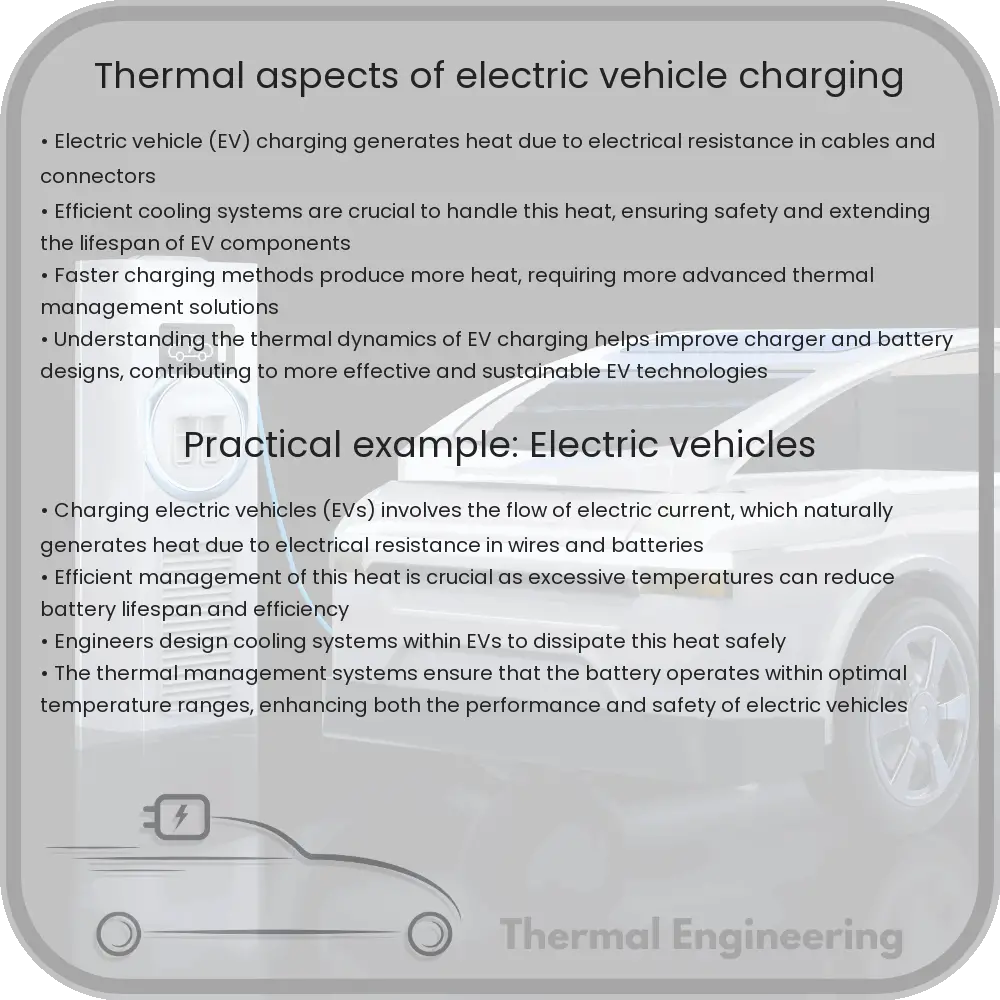Explore the thermal challenges and management strategies in electric vehicle charging, focusing on heat generation, its impacts, and future advances.

Understanding the Thermal Aspects of Electric Vehicle Charging
Electric vehicles (EVs) have gained popularity as a sustainable alternative to gasoline-powered cars. However, the process of charging an EV involves considerable electrical energy, which converts partially into heat. This article explores the thermal aspects of electric vehicle charging, including the sources of heat, challenges this heat presents, and how it is managed in modern EVs.
Sources of Heat During EV Charging
Heat generation during EV charging primarily originates from two sources:
- Battery Resistance: When electric current passes through the EV battery, its internal resistance causes some energy loss in the form of heat. This is similar to how a wire heats up if a current runs through it.
- Charging Circuitry: Components of the charging systems such as converters, inverters, and connectors also generate heat due to electrical resistance and inefficiencies in the electronic circuitry.
The amount of heat generated depends on several factors including the state of the battery, the charging speed (or power level), and ambient temperature conditions.
Thermal Challenges in EV Charging
Excessive heat during charging can lead to multiple issues:
- Battery Degradation: High temperatures accelerate chemical reactions in the battery cells, which can reduce the battery’s lifespan and efficiency.
- Safety Risks: Overheating can increase the risk of thermal events such as fires or explosions in extreme cases.
- Reduced Charging Efficiency: As heat increases, the efficiency of charging decreases, potentially prolonging the charging time and reducing the overall energy efficiency of the vehicle.
Heat Management Strategies
Effective thermal management is crucial for the safe and efficient operation of EVs. Manufacturers employ various strategies to deal with the heat generated during charging:
- Active Cooling Systems: Many EVs are equipped with liquid cooling systems that circulate a coolant to absorb and dissipate heat from the battery and other components.
- Advanced Battery Chemistry: Some newer battery technologies are designed to operate efficiently at higher temperatures, thereby reducing the impact of heat on battery performance and lifespan.
- Optimized Charging Algorithms: Smart charging technologies adjust the charging rate based on real-time thermal data to minimize heat generation and manage temperature rise effectively.
Future Prospects
As EV adoption increases, improving thermal management during charging remains a critical focus for researchers and engineers. Advances in materials science, battery technology, and cooling systems promise to enhance the thermal handling capabilities of future electric vehicles, thereby improving their safety, efficiency, and appeal to consumers.
In summary, understanding and managing the thermal aspects of EV charging is essential for the development of safer, more efficient, and durable electric vehicles. With continuous technological improvements, the future of electric transportation looks both promising and exciting.